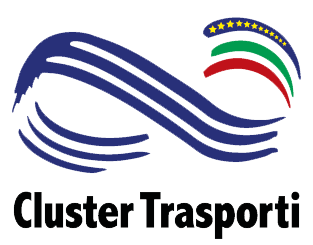Report 2020-2021 SiPotra: Policies and tools for a new urban mobility

Published 24 September 2021
The fourth Sipotra Report dedicated to urban mobility was presented today, with a focus on Urban Plans for Sustainable Mobility (PUMS). A subject, that of the Pums, geographically circumscribed yet very vast, complex and of priority importance for the quality of life in cities and for its environmental implications.
The constant growth of urban areas, the places of settlement of most of the world population and of most of the productive activities, has generated complex and interdependent institutional, regulatory, urban planning and transport problems. The situation is complex, not least because it is the terrain of public policies in which, as in many other cases highlighted in previous reports, Italy suffers omissions or considerable delays; all the more so because competing competences between the State and local authorities are at stake, multiplying inertia and conflicts of attribution.
With today’s event, the association therefore wanted to provide multidisciplinary and operational support to the change in the way of approaching the problems of urban mobility and the affirmation of a new paradigm, critically analyzing the current state of the art, in Europe and in Italy, and formulating proposals on the many open fronts so that the necessary changes are completed in the most effective and rapid way possible. During the works, the side paper “Proposals for an update of the Urban Plans for Sustainable Mobility in Italy” was also presented.
Giovannini: “It’s necessary to constantly update the Pums”
The works were opened by the Minister of Infrastructures and Sustainable Mobility Enrico Giovannini who wanted to thank the association for drawing up “a necessary report, given the new sustainability objectives of urban mobility, which are also clearly evident in the operation of the change of the name of the ministry ”. “In today’s report the need to update the Pums is clearly recognized – added Giovannini – technologies and preferences change radically quickly and it is important to underline that there is a lack of proper attention to these aspects. The Pums are urgent and indispensable tools in the planning of cities, also in relation to the new EU directives but also on the basis of the new urgencies outlined by Covid. In creating tenders, for example, it is crucial to take into account the fact that technology is constantly evolving ”. Giovannini then explained that a research and development center has recently been established within MIMS in the sector of infrastructure sustainability and mobility, technological innovation, with the consequent introduction of a nucleus of researchers and technologists who will contribute to increasing the quality of the policies of the Ministry. The goal is to integrate the work of universities and administration precisely in order to encourage the creation of more virtuous and above all flexible projects able to put this “future” technology at the center. “For a long time the Pums have been too focused on supply – concluded Giovannini – the Covid drama, as well as recent government decisions, indicate that we can drive demand and not just chase supply. For example, with the figure of the Mobility manager we can create new urban plans different from the ones of the past thanks to this figure who will have a continuous dialogue with the local entity. However, this requires a great capacity for cooperation: all the necessary elements are on the plate, we just need to to combine them ”.
Cascetta: “We need flexible and adaptable ‘cognitive plans’
During the round table that followed the presentation of the Report, the president of the Transportation Cluster Ennio Cascetta also spoke, underlining the importance of the Report in his mission to provide updating proposals to the Pums. “The concept of Pums renewed every ten years with long and tiring administrative steps we can say that it is now outdated – explained Cascetta -. Today we must conceive the plan as a starting point for a cognitive process, also based on a public debate aimed at improving the quality of the project. Stakeholders, administrators and consultants must intervene in a new cognitive process in which only binding decisions find applications, therefore those in possession of mature lines. The plan must have the ability to adapt and change according to new objectives and needs, if necessary: a shared planning project that can be shaped according to new realities “. “We are in the seventh transport revolution, a gigantic phenomenon that sees the development of the potential of self-driving vehicles: the possibilities for goods or passengers are therefore endless. All this is part of the phenomenon of the energy transition of power supplies. The picture is completed with the introduction of MaaS – Mobility as a Service, a reality with enormous potential “. Cascetta then launched its proposal to include the concept of “trip pricing” in the context of urban transport, ie a variable cost of the service that rewards sustainable mobility. Finally, the president of the Cluster, after underlining the need to start a profound LPT reform, asked to introduce an eco-rational orientation in reducing C02 emissions with a more realistic approach on the environmental impacts of the various urban mobility vehicles.


